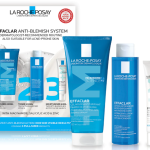Introduction
Hearing loss affects millions of people globally, with sensorineural hearing loss (SNHL) being the most common and often irreversible type. This form of hearing impairment can occur gradually or suddenly and is typically caused by damage to the inner ear or auditory nerve. Understanding the most effective sensorineural hearing loss treatment options is crucial for patients and caregivers seeking to improve communication and quality of life.
What Is Sensorineural Hearing Loss?
Sensorineural hearing loss happens when the inner ear (cochlea) or the auditory nerve becomes damaged. It contrasts with conductive hearing loss, which involves the outer or middle ear. SNHL affects the ability to hear soft sounds and may distort louder sounds, making speech and music unclear.
Common causes include:
-
Aging (presbycusis)
-
Prolonged noise exposure
-
Head trauma
-
Infections
-
Autoimmune diseases
-
Genetic factors
-
Ototoxic medications
Since the loss is usually permanent, timely identification and management are essential.
Signs and Symptoms
SNHL can develop at any age and often includes:
-
Difficulty understanding speech, especially in noisy environments
-
Trouble hearing high-pitched sounds
-
Muffled or distorted sound perception
-
Tinnitus (ringing in the ears)
-
Imbalance or dizziness in some cases
These symptoms can significantly impact social interaction, education, and work performance.
Diagnosis of Sensorineural Hearing Loss
Accurate diagnosis is the first step toward treatment. Healthcare providers use a combination of:
-
Audiometry: Measures hearing thresholds across frequencies
-
Tympanometry: Checks middle ear function
-
Otoacoustic Emissions (OAE): Evaluates cochlear (inner ear) response
-
Auditory Brainstem Response (ABR): Measures neural activity in response to sound
Once SNHL is confirmed, the focus shifts to finding the most appropriate sensorineural hearing loss treatment based on severity and lifestyle.
Sensorineural Hearing Loss Treatment Options
While complete recovery is rare, several treatment methods can restore functional hearing and communication abilities:
1. Hearing Aids
For mild to moderate SNHL, digital hearing aids are often the first recommendation. These devices amplify sound and improve clarity. Advanced models come with:
-
Noise reduction
-
Directional microphones
-
Bluetooth connectivity
-
Rechargeable batteries
They are customized to each user’s audiogram and provide immediate benefit in daily communication.
2. Cochlear Implants
When hearing aids aren’t effective, especially in severe to profound SNHL, cochlear implants are a highly successful option. A cochlear implant bypasses damaged hair cells in the inner ear and directly stimulates the auditory nerve.
Candidates include:
-
Adults with profound hearing loss in both ears
-
Children as young as 12 months old
-
Individuals who receive little to no benefit from hearing aids
Cochlear implants have significantly improved language development in children and quality of life for adults.
3. Auditory Brainstem Implants (ABI)
In rare cases where the auditory nerve is absent or damaged, such as in neurofibromatosis type II (NF2), ABIs may be used. This device stimulates the brainstem directly and is typically used when cochlear implants aren’t viable.
4. Therapeutic Approaches
Speech and auditory training is a valuable addition to device-based treatment. These therapies help patients:
-
Improve speech comprehension
-
Develop lip-reading skills
-
Use visual cues effectively
For children, early intervention programs support language acquisition and social development.
5. Emerging Treatments
Ongoing research is exploring potential cures, including:
-
Gene therapy
-
Hair cell regeneration
-
Stem cell therapy
-
Neurotrophic drug delivery
Though experimental, these avenues offer hope for future sensorineural hearing loss treatment strategies.
Lifestyle Adjustments and Support
Living with SNHL requires emotional resilience and social adaptation. Support tools include:
-
Assistive Listening Devices (ALDs)
-
Captioned phones and alert systems
-
Support groups and hearing loss associations
-
Mental health counseling to combat isolation and anxiety
Family education also plays a critical role in improving the hearing-impaired person’s environment.
Prevention Is Key
While some causes of SNHL are unavoidable, others are preventable:
-
Avoid loud noise and wear ear protection
-
Limit use of ototoxic drugs
-
Treat ear infections promptly
-
Get regular hearing screenings, especially after age 50
For infants, newborn hearing screening can help detect SNHL early, allowing for quicker treatment and better outcomes.
Sensorineural hearing loss treatment has advanced significantly in recent decades, offering hope and solutions for individuals affected by this life-altering condition. Although it may not be reversible, hearing aids, cochlear implants, and supportive therapies can dramatically improve communication and social interaction. With ongoing research, the future holds even more promise for those living with SNHL. If you or a loved one are experiencing signs of hearing loss, early consultation with an audiologist is essential for timely and effective care.




